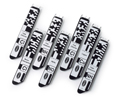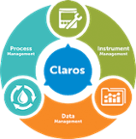-
Products
-
Lab Instruments
Titration Systems Other Instruments
-
Lab Meters and Probes
Sension+ Meters and Probes Calibration StandardsOther Meters and Probes
- Chemistries, Reagents, and Standards
- Online Analyzers
- Flow and Collections
-
Online Sensors and Controllers
Conductivity Sensors
- 3400 Analogue Contacting
- 3400 Digital Contacting
- 3700 Analogue Inductive
- 3700 Digital Inductive
- 9523 Cation Conductivity
- Automated Lab Systems
- Multiparameter Online Panels
- Claros Water Intelligence System
- Test Kits & Strips
-
Microbiology
Prepared Media InstrumentsLabware
- Accessories
- Funnels, Pumps & Manifolds
- Microbiology Filters
- Petri Dishes & Accessories
- Sampling Bags
- Vials, Tubes, Bottles & Racks
-
Lab Equipment and Supply
ApparatusInstruments Glassware/PlasticwareGeneral Lab Consumables Safety EquipmentBooks and Reference Material
- Samplers
- Industrial UV
-
Lab Instruments
- Parameters
- Industries
- Support
- Service
- e-Shop
- Brands






